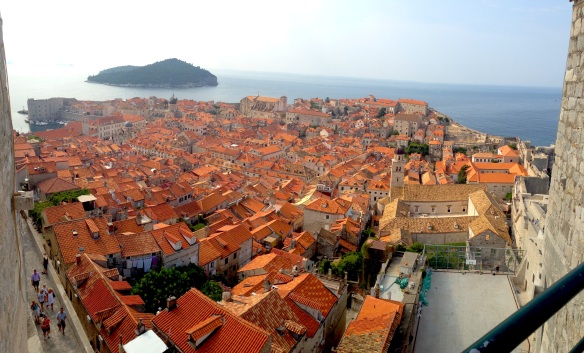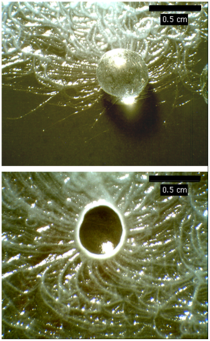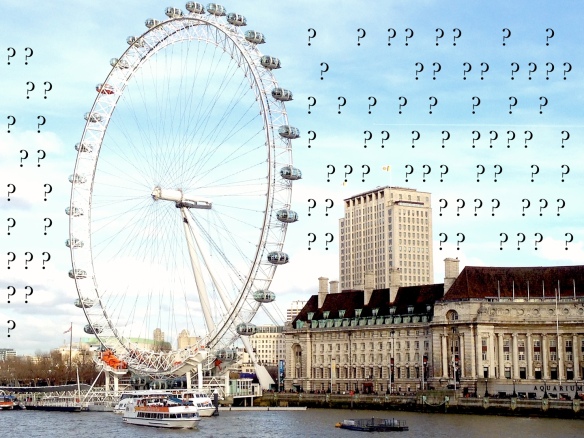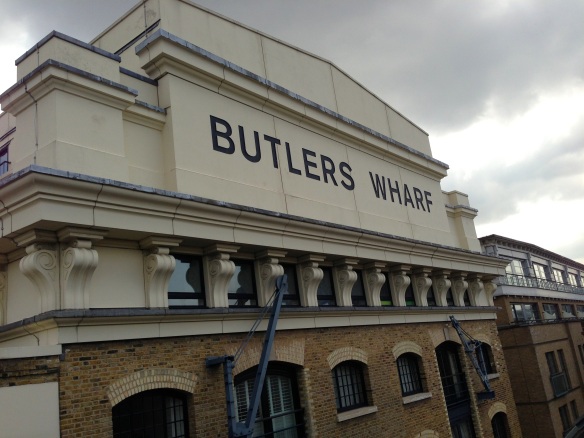One of my favorite ways to deepen the experience of a new destination is to immerse myself in a book set in that place while I visit. I first experienced the magic of layering fiction and real-life exploration with the book/destination duo of The Glass Room by Simon Mawer/Villa Tugendhat in Brno, Czech Republic in 2013. Like a properly paired wine and cheese, a book and a trip can enhance one another into an experience that neither could be alone. This post is about one such blended experience, when I explored the southwestern tip of Florida while reading Swamplandia!.
London broke my eggs.
Sometimes, I don’t understand London. It’s not one thing in particular, it’s just that I’ll go out and come home feeling exhausted and frustrated. Most of the time I chalk it up to being American. I just don’t understand what to expect in some situations.
Like today, for example. Nothing big went wrong, yet I came home with wet socks, holding a raw egg in my hand, and wondering why I couldn’t manage a simple day’s itinerary. If you understand this city, please leave tips in the comment section. If London bewilders you, too, perhaps you’ll relate to this sequence of events: Continue reading
Say what you mean. Mean what you write.
I love words. Words impart the power to express yourself with nuance and clarity, but only if you use them correctly. Some words, as we know, sound similar to others but mean very different things. You might slip by in conversation, but if you write the wrong one, your ignorance glares out at the reader, possibly obscuring the meaning of a sentence and definitely causing the reader to pause and consider your writing ability, thinking:

Whenever I realize that I’ve been using words imprecisely, I take note, happy that I’ve discovered the error and a bit chagrined that I’ve likely made it several times. Below are four pairs of words I haven’t been using quite right, perhaps my confession will help you avoid the same mistake. Continue reading
An easy way to visualize the wind chill-frostbite relationship
Below is a table shared by the Centers for Disease Control and Prevention (CDC) that visualizes how higher winds increase the danger of frostbite.
For me, the table reinforces the importance of monitoring wind just as much as temperature during cold months. Add a little wind to 0ºF and your risk of frostbite goes from low to happening within 30 minutes. Add a little wind to -10ºF, and you’re in the 10-minutes-til-frostbite range.
Even after this polar vortex passes, be careful out there and stay warm.
Find more information from the CDC here: Outdoor Winter Safety
Read a little more about cold weather safety in this article I wrote for Travelers Today: How to Weather the Polar Vortex Without Losing a Body Part
Getting out of Dubrovnik
If you’re traveling from north to south in Croatia, your last stop might be Dubrovnik. Mine was. And after two weeks of crystalline Adriatic seawater and minimal cruise crowds, Dubrovnik shocked me. Yes, the walls are beautifully preserved. Yes, it has a historic and aesthetic Old Town.  But the place is crammed with tourists. If you’re looking for clean beaches, reasonable accommodation, or even elbow room while walking around, Dubrovnik might disappoint you.
But the place is crammed with tourists. If you’re looking for clean beaches, reasonable accommodation, or even elbow room while walking around, Dubrovnik might disappoint you.
However, I am not writing this to tell you not to go. I am here to tell you where to go when you’re there. Because it is hard to not go, even people who don’t plan to go back would find it difficult discouraging you to visit at least once. And when you run, sweaty and panicky, away from the Old Town crowds there are some amazing day trips to take. Here are the two I recommend, one to a gorgeous and haunting beach and one to a wonder-filled arboretum. Continue reading
Soil in the Headlines
A recurring post on this blog, Soil in the Headlines, collects a few of the ways soil is featuring in our lives and in our news.

Figure from this PLOS ONE article (#2 on the headline list!). Researcher’s caption: “Variation in B. mycoides colony morphology due to the presence of 5 mm glass beads during incubation on PCA: with bead still in place (top); with bead removed (below).”
doi:10.1371/journal.pone.0081549.g005
Japan tries to contain 133,000 tons of Fukushima’s radioactive soil
According to Japanese Daily Press, the Japanese government earmarked $970 million to store soil contaminated by Fukushima’s nuclear energy plant disaster. With the soil collected and money set aside to store it, the next question is, who wants to have a radioactive soil containment facility in their backyard? So far, no one is volunteering.
Soil microbe displays intriguing and potentially useful growth patterns
A recently published article in PLOS ONE describes a soil bacteria’s response to physical change in its surroundings. The bactieria, Bacillus mycoides, reorganized themselves into growth patterned around physical obstructions in their environment. Beyond the, “ooo, neat!” factor, this new knowledge of the bacteria may be useful for Continue reading
All the world’s a stage, and all the people tweeters.
 I came to Twitter skeptically. The first day of my journalism master’s program a professor required us to sign up, so I did. As I claimed @emilyeggleston, I wondered if my future self would wistfully mark that moment as the start of an exponential rise in the amount of time I spent staring at my phone. If you’d handed me this New York Time’s op-ed, My case against Twitter, I probably would’ve yanked my fingers from the keyboard and remained account-less, class requirement or no.
I came to Twitter skeptically. The first day of my journalism master’s program a professor required us to sign up, so I did. As I claimed @emilyeggleston, I wondered if my future self would wistfully mark that moment as the start of an exponential rise in the amount of time I spent staring at my phone. If you’d handed me this New York Time’s op-ed, My case against Twitter, I probably would’ve yanked my fingers from the keyboard and remained account-less, class requirement or no.
But two years later, the only thing I regret about signing up is not choosing a shorter handle. Here’s why. Continue reading
The Cardamom Building
London simultaneously steeps you in cosmopolitan bustle and historical intrigue. At the end of June, I spent a week reveling in both worlds. My apartment was along Shad Thames, a street formerly host to wharf commerce, that trails southeast away from Tower Bridge along the Thames River.
I was across the street from Butlers Wharf, an old warehouse district that housed incoming goods, notably spices, from the Thames. The wharf opened in 1872, closed in 1973, and sold for redevelopment a decade later.
I could look down from my bedroom to see tourists stop and stare at the iconic iron bridges suspended between buildings, once avenues for trade, now home to flower pots and patio chairs. The bridges that used to guide spices into London are now inspiration for passersby to wonder: who is lucky enough to live here?
Investigative journalism attacked by Wisconsin Republicans
As a recent graduate from UW-Madison’s School of Journalism and Mass Communication professional master’s program, I read the following GOP addition to the Wisconsin state budget with chagrin:
Center for Investigative Journalism. Prohibit the Board of Regents from permitting the Center for Investigative Journalism to occupy any facilities owned or leased by the Board of Regents. In addition, prohibit UW employees from doing any work related to the Center for Investigative Journalism as part of their duties as a UW employee.
The relationship between the Wisconsin Center for Investigative Journalism (WCIJ) and UW-Madison’s J-School is an excellent resource for students. In the very small amount of discussion by the Joint Finance Committee of this provision, there was no mention of the value of hosting the award-winning WCIJ in a place where students can learn from both experienced reporters and advanced digital journalism techniques. It appeared that Wisconsin Republicans think WCIJ is benefitting unnecessarily from free office space provided by a state institution. This overlooks the reciprocal benefit to the J-School, a benefit that, as a journalism student, I found to provide one of the best learning opportunities on campus and in Madison.
WCIJ staff guest lectured during several of my classes and shared insight into how to do rigorous, top-quality reporting. For example, they taught both one of my classes and a student publication for which I write and edit how to execute their outstanding model for fact-checking stories.
I created a storify of the action and reaction today. This one goes out to the organization that showed me how to make my first Google Fusion Tables map, the Wisconsin Center for Investigative Journalism. For WCIJ’s reaction, go directly here. To see my storify, which includes tweets and links to local, state, and national coverage, visit http://storify.com/EmilyEggleston/wisconsin-legislature-attacks-investigative-journa#
Sinkhole coverage: a fact free-for-all?
 A Florida sinkhole that claimed a man’s life on Feb. 28 drew ubiquitous media coverage. It was a story too horrifying too pass up. The floor of a man’s home opened to swallow him whole, leaving only grief and shock behind. Everybody from The New Yorker to CNN covered it.
A Florida sinkhole that claimed a man’s life on Feb. 28 drew ubiquitous media coverage. It was a story too horrifying too pass up. The floor of a man’s home opened to swallow him whole, leaving only grief and shock behind. Everybody from The New Yorker to CNN covered it.
When so many publications, channels, and websites offer coverage of the same issue, it provides an ideal moment to compare their styles and, as I found in this case, their accuracy. For instance, how old is the victim? Unfortunately, I can’t answer that question and I’m not sure many of these media outlets could either: Continue reading




